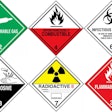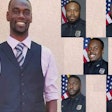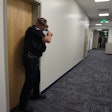The estimated number of violent crimes in the United States decreased 0.2% in 2017 compared to 2016, according to FBI data released on Monday.
Property crimes reportedly dropped 3.0%, according to the FBI.
"The 2017 statistics show the estimated rate of violent crime was 382.9 offenses per 100,000 inhabitants, and the estimated rate of property crime was 2,362.2 offenses per 100,000 inhabitants," the FBI said in a statement.
The FBI said that the estimated number of robbery offenses decreased 4.0%, and the estimated number of murder and non-negligent manslaughter offenses decreased 0.7% when compared with estimates from 2016. Burglaries dropped 7.6%, larceny-thefts decreased 2.2%.
So why does it feel to many cops on the street that the exact opposite is true?
Can two opposing ideas be simultaneously true?
Yes, and here's why.
The Ups and Downs in Crime
In some places, cops have been allowed to do their jobs, keeping crime to a minimum by proactively patrolling their sectors. Crime is down in those places because police are policing.
Also, the underlying causes of crime are being addressed at a fundamental level. Housing issues are being addressed.
The economy in many of these places is improving, so people are finding jobs.
People are getting help. They are getting out from the burden of addiction.
Progress is being made.
Undeniably, progress is being made.
Thanks Be to God and His Servants—progress is being made.
In some cities, however, crime in the past year has not just grown, it has mushroomed out of control where police have been prevented from policing.
In 2017, Baltimore set a new per-capita homicide record with 343 murders, roughly 56 killings per 100,000 residents, according to CBS News. Countless other individuals were shot—but not fatally—in Charm City last year.
Baltimore isn't even the most dangerous city in America—per capita—according to the FBI.
That unenviable distinction goes to St. Louis.
With a population of just over 310,000 souls, the Gateway to the West had 205 murder victims, 289 victims of reported rape, and 1,944 victims of robbery in 2017, according to the FBI report.
That same year, 46 law enforcement officers died from injuries incurred in the line of duty during felonious incidents, according to the FBI's 2017 LEOKA report. At least eight of those deaths were the result of premeditated ambush attacks on police officers.
Then, there are the "non-violent" crimes—property crimes—which can sometimes be disturbingly violent.
San Francisco recorded nearly 30,000 car break-ins in 2017, shattering previous crime records in what local law enforcement officials have called an "epidemic," according to NBC News.
Enforcement of those car burglary calls in the City by the Bay is close to non-existent. There are just too many other calls of higher priority, and that's just how the cookie crumbles for those victims.
Lies, Damned Lies, and Statistics
Mark Twain is credited with popularizing the saying, "There are three kinds of lies: lies, damned lies, and statistics," but like all good poets, he didn't borrow—he stole that line from British Prime Minister Benjamin Disraeli (a.k.a. the 1st Earl of Beaconsfield).
This brings me to the central problem with any manner of statistical examination of crime in the United States.
Simply—and importantly—numbers lie.
We don't know what we don't know.
Uniform Crime Reporting (UCR) data is voluntarily submitted by local police agencies, and not every city provides information to the FBI. Further, how many crimes are committed that are not even reported to local authorities?
How many DUIs defy all laws of chemistry, physics, and logic—let alone state or local laws—and find their way home without incident?
How many DVs go unreported to police? Those acts of violence and terror are crimes—no doubt about it—but countless victims remain silent.
How many bar fights occur in America every night? Most of those incidents end with the barman or the bouncer ejecting the combatants with the statement, "You don't have to go home, but you can't stay here!"
I know.
I was a barman and a bouncer not too many years ago.
How many sexual assaults? How many of these crimes happen without anyone other than the victim and the violator knowing about the incident? I'm sick to my stomach just thinking about it. One is too many, but there are undoubtedly thousands—every year.
How many times have American police officers—totally disincentivized to conduct proactive police work—simply rolled past a drug deal going down on a well-known hot corner?
So… I don't believe the numbers—not even a little bit.
Crime is down where cops are encouraged by their citizens to enforce the law.
Crime is up in places where the opposite is true.
That's how that works.
Two Mountains, One Sun
Perspective is probably the greatest factor informing a person's perception of a truth.
Indulge me...
Two mountaineers stand atop two peaks on the east and west sides—respectively—of a broad basin. Each climber surveys the vast valley, seeing the gorge full with copses of trees dotting a winding river.
The sun is at a high-noon—due-south in the sky—and long autumn shadows are cast from the high treetops.
The hiker on the eastern peak shouts, "Look at how the shadows are cast so beautifully from left to right with the sunlight!"
The hiker on the western peak replies, "No! Those shadows—agreeably, so beautiful—fall from right to left!"
Both individuals are correct, given their relative position to the valley, the sun, and the shadows.
The fact of the matter is that the shadows are cast from south to north.
How you see things greatly depends on your relative position to what you're seeing.
Same with the UCR Report.
Nationally, crime is down, according to the FBI.
I believe that to be true—nationally, the numbers are good.
Locally, things get a little different—depending on where your "local" might be.
The Winds and the Weather
Above, I mentioned car break-ins in San Francisco.
Fog City, my adopted home town, is a fitting metaphor for how reports like the FBI UCR have become an outmoded measure of crime in America.
A person residing in the Sunset District may look at the weather report (63 degrees and no chance of precipitation) and know that the truth—for them—is that it will be foggy and cold all day.
A person residing just five miles east in the Mission District—reading exactly the same data—may be more worried about getting shot in the crossfire of a gunfight between two rival gangs.
Same location.
Same information.
Different conclusion.
Just like the FBI UCR Report.
All policing—like all politics—is LOCAL.

















